What does 131 mean?
The restored Tiger 1 at The Tank Museum, Bovington, UK, is now the best known tank in the world. And it is almost universally known as "Tiger 131". But "131" was not a unique identifier, nor a permanent one.
The real name of this tank - by which it was known in German records - is its chassis number, 250122. This implies that it was the 122nd Tiger in the production sequence.
A Tiger's chassis number was usually not visible from outside. A tactical ID, such as "131", would be painted on the tank and would be its name in day-to-day wartime operations. But the tactical name was only valid for a period of time, and only within the tank's own unit.
The digits "131" are not a number; they don't represent one hundred and thirty-one of anything. Instead they denote this tank's place in the unit's organisation. And for that reason, other units also had Tigers named "131".
Notable Tigers that were also 131
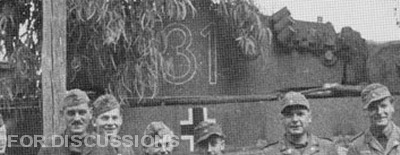
Even within the handful of Tigers sent to Africa, there was another "131". This tank was older than the famous one, and saw more combat . It is believed to have led the charge in the battle of Sidi N'sir.
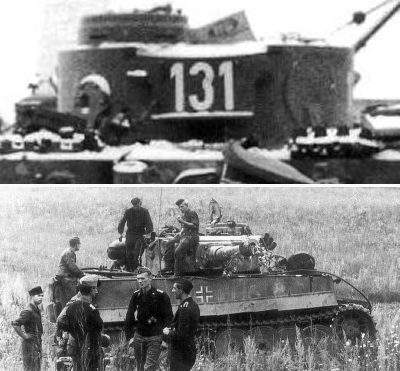
Another "131" that predates the British one was this, issued to s.Pz.Abt.503 in 1942. In the summer of 1943 it was still serving, but with a second turret, and it was renumbered as "123". In this guise it was featured in a famous set of photos.
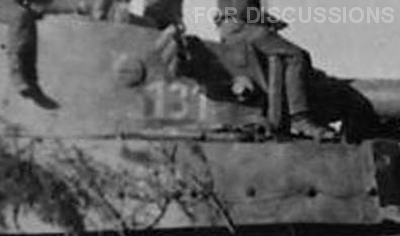
A Tiger almost identical to our "131" was sent to a place very unlike Tunisia. It served in the Spring of 1943 with s.Pz.Abt.502 near Leningrad. The end of this Tiger's gun was painted to resemble a dragon's head.
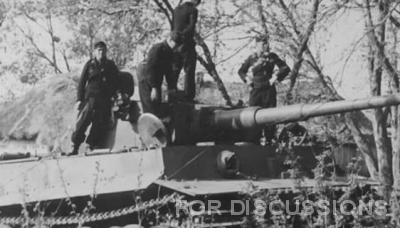
Another Tiger of the same version as our "131" was to be found in s.Pz.Abt.505. This one probably fought at Kursk.
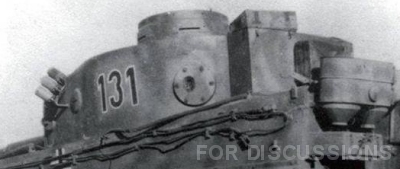
The usual reason for renumbering Panzers was a reorganisation of the unit after gaining or losing a significant number of tanks. When s.Pz.Abt.503 did away with their first "131", they gave the old name to a new Tiger. It came with a newly arrived crew, commanded by Fendesack, that included a gunner called Kurt Knispel. There is a reliable written account of Knispel fighting at least one battle in this tank.
Other 131 Tigers
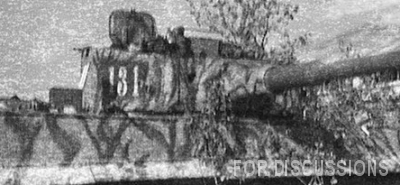
Not every Tiger unit used the three-digit identifier system. Months therefore passed without any new Tiger being named "131". This Mid Tiger was issued in the autumn of 1943 to s.Pz.Abt.509.
We cannot find photos of all of the Tiger "131"s. The 501st battalion, which was rebuilt after being lost in Tunisia, must have had a second "131" but we have not seen it. We also lack any photos of a "131" belonging to s.Pz.Abt.508 in Italy, or that of s.Pz.Abt.507 on the Ostfront. The 504 battalion, owners of the famous "131", was rebuilt in Holland and must have got a new Tiger "131" early in 1944. But, again, it has not been found in any photograph.
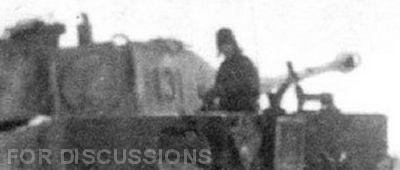
This Tiger of z.Pz.Abt. 503 was assigned to the legendary Panzerregiment Bäke. The photo is blurred but we can see the travel lock at the right, implying that it's a Mid Tiger, and therefore the third "131" of the 503 battalion.
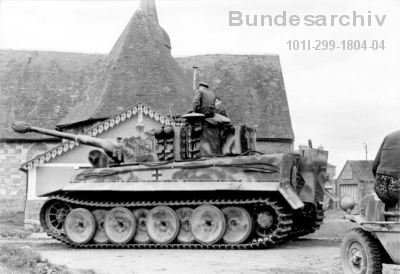
This well-known photo shows the "131" of Michael Wittman's unit, the 101st SS heavy tank battalion in France.
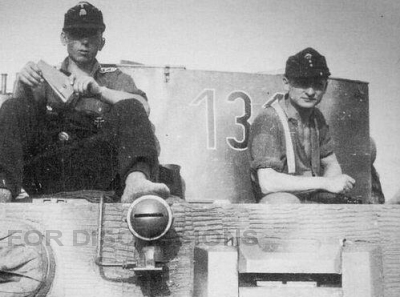
The "131" of the 102 SS battalion also happens to be in the photographic record.
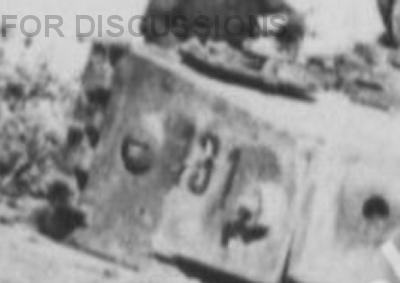
As the war drew to a close, photographs were taken less often, tanks were marked less carefully and small ad-hoc Tiger units were formed without careful organisation. This "131" belongs to Schwere Panzerkompanie "Hummel", which was a very small unit and didn't have enough Tigers to warrant the three-digit system. The tank may have come to them second-hand from some other unit, already bearing these markings. We simply don't know.
So, we are sure that at least 14 other Tigers bore the same identity code "131" as the Tiger surviving today. It's unfortunate that its true identity 250122 is not better publicised.